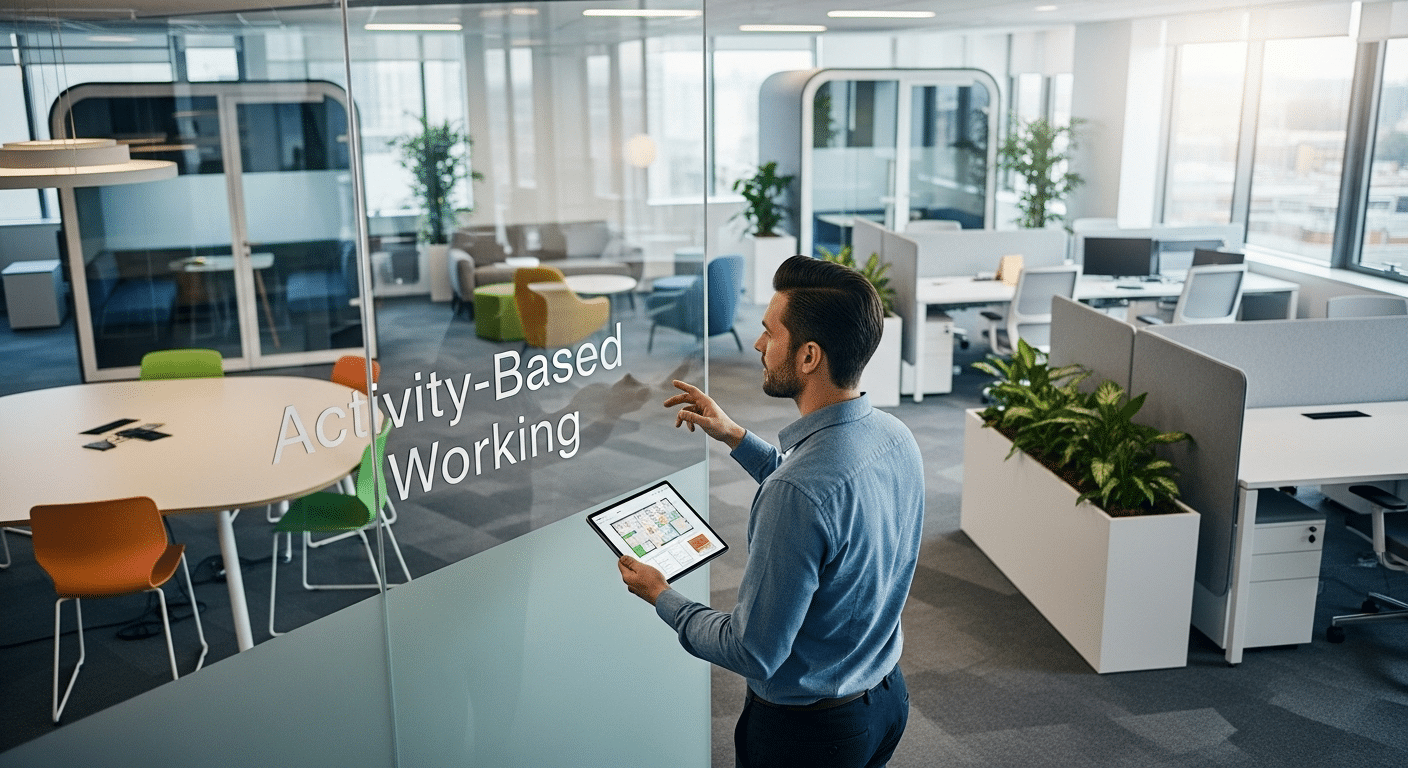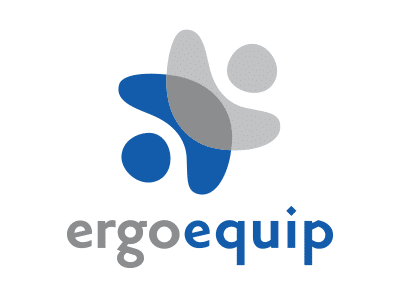Common Challenges with Activity-Based Working and How to Fix Them

Navigating the Dynamic Landscape of Modern Workplaces
Activity-Based Working (ABW) has emerged as a transformative approach to office design, promising enhanced flexibility, collaboration, and employee satisfaction. By providing diverse settings tailored to specific tasks, ABW seeks to empower individuals and foster a more dynamic work environment. However, the transition to and ongoing management of an activity- based working office is not without its complexities. Organisations often encounter a range of challenges that, if left unaddressed, can hinder the very benefits ABW aims to deliver. This comprehensive guide explores the common pitfalls associated with ABW and offers practical, human-centric solutions to ensure a successful and thriving activity-based working environment.
Understanding the Foundation of Activity-Based Working
Before delving into the challenges, it’s crucial to acknowledge the core principles that make ABW appealing. At its heart, activity-based working office design is about choice and empowerment. It moves away from the traditional model of one person, one desk, offering instead a variety of work settings – from quiet focus zones and collaborative hubs to informal break areas and agile workspaces. The goal is to provide employees with the autonomy to select the environment best suited to their current task, thereby optimising productivity, fostering innovation, and promoting overall wellbeing. The true success of ABW, therefore, hinges on a deep understanding of organisational culture, employee needs, and strategic implementation.
Challenge 1: Resistance to Change and Cultural Adoption
One of the most significant hurdles in implementing ABW is overcoming entrenched habits and cultural resistance. Employees accustomed to personal desks, familiar routines, and a sense of ownership over their immediate workspace may view the shift to ABW with apprehension. Concerns about losing personal space, difficulty finding colleagues, or perceived loss of status can lead to low adoption rates and even active resistance. Without strong leadership and a clear narrative, the cultural shift required for successful ABW can be a major stumbling block.
How to Fix It:
- Proactive Communication and Education: Initiate the conversation about ABW well in advance of implementation. Clearly articulate the “why” – explaining the benefits for individuals and the organisation. Conduct workshops and information sessions to familiarise employees with the new environment, its purpose, and how to utilise the different zones effectively. Highlight stories of success from other companies that have adopted activity-based working examples.
- Employee Involvement and Co-creation: Involve employees in the design and planning process. Conduct surveys, focus groups, and pilot programs to gather feedback and address concerns. When employees feel their input is valued and that they are part of the journey, ownership and adoption rates significantly increase.
- Leadership as Role Models: Leaders must actively embrace and demonstrate effective ABW practices. Seeing management utilise various zones and adapt to the flexible environment sets a powerful example and signals organisational commitment.
- Phased Implementation: Consider a phased approach to ABW, allowing teams or departments to transition gradually. This provides an opportunity to learn, refine processes, and build confidence before a full-scale rollout.
Challenge 2: Ineffective Space Utilisation and Design Flaws
Even with the best intentions, the physical layout of an ABW office can present challenges. Common issues include an imbalance of different zone types (e.g., too many collaborative spaces, not enough quiet zones), poor acoustics leading to distractions, inadequate technology integration, or simply insufficient desk availability during peak times. A poorly designed activity-based working (ABW) office can lead to frustration, reduced productivity, and a perception that ABW is ineffective.
How to Fix It:
- Data-Driven Design and Iteration: Engage activity-based working consultants to conduct thorough workplace assessments and analyse current space utilisation patterns. Use data to inform the design and allocation of different zones. Post-occupancy evaluations are crucial for identifying areas for improvement. Be prepared to iterate and adjust the layout based on employee feedback and evolving needs.
- Prioritise Acoustics and Privacy: Invest in sound-absorbing materials, strategically placed screens, and designated quiet zones to minimise distractions. Ensure phone booths or small meeting rooms are readily available for private conversations and focused work.
- Seamless Technology Integration: Ensure robust and reliable Wi-Fi, easily accessible power outlets, and readily available collaboration tools (e.g., video conferencing equipment, interactive displays) in all relevant zones. Technology should support fluidity, not hinder it.
- Flexibility and Adaptability: Design the space with a degree of flexibility. Modular furniture, movable partitions, and easily reconfigurable areas allow the office to evolve with the organisation’s changing needs, preventing stagnation and ensuring continued relevance.
Challenge 3: Maintaining Connection and Team Cohesion
In an environment where employees may not have a fixed desk or be in the office at the same time, maintaining strong team connections and a sense of belonging can be challenging. Some individuals may feel isolated or disconnected from their team if they struggle to locate colleagues or spontaneously interact. This can impact collaboration, knowledge sharing, and overall team morale within an activity-based working office.
How to Fix It:
- Designated “Neighbourhoods” or Team Zones: While promoting flexibility, consider establishing soft “neighbourhoods” or designated zones where specific teams can congregate when they are in the office. This provides a sense of belonging and makes it easier for team members to find each other.
- Scheduled Team Touchpoints: Encourage and facilitate regular team meetings, both formal and informal, to ensure consistent communication and connection. These could be daily stand-ups, weekly team lunches, or dedicated collaborative work sessions.
- Utilise Communication Platforms: Leverage digital communication and collaboration tools (e.g., Slack, Microsoft Teams) to maintain connectivity regardless of physical location. Encourage virtual “water cooler” chats and channels for informal interaction.
- Foster Social Opportunities: Create opportunities for social interaction within the office beyond work tasks. This could include shared break areas, wellness programs, or organised social events that encourage cross-team mingling and build a stronger sense of community.
Challenge 4: Ensuring Equity and Fairness in Access
A common concern in ABW environments is the equitable distribution of desirable workspaces. Some employees might consistently gravitate towards prime spots (e.g., quiet corners, window seats), leading to perceived unfairness or a “scramble” for preferred spaces. This can create friction and undermine the positive intent of ABW. Moreover, ensuring accessibility for all employees, including those with specific ergonomic needs, is paramount.
How to Fix It:
- Clear Guidelines and Etiquette: Establish and communicate clear guidelines for using different zones and common areas. This could include booking systems for meeting rooms, rules for desk “packing up” at the end of the day, and respectful noise levels in various zones. Reinforce these guidelines through visual cues and regular reminders.
- Promote Variety and Rotation: Encourage employees to explore and utilise all available zones. Highlight the benefits of different settings for different tasks. Leaders can model this behaviour by varying their own work locations.
- Adequate Supply of All Zone Types: Ensure the office provides a sufficient number of each type of zone to meet demand during peak periods. If quiet zones are consistently overbooked, it indicates a need for more.
- Prioritise Ergonomic Support: Work with activity-based working consultants to ensure that all workspaces, regardless of zone, meet ergonomic standards. Provide access to adjustable furniture and ergonomic accessories. Have a clear process for employees to request individual ergonomic assessments and support. Regular “pop-up” ergonomic advice sessions can also be beneficial.
Challenge 5: Overcoming Technology and Connectivity Hurdles
While technology is an enabler of ABW, it can also be a significant source of frustration if not managed effectively. Slow Wi-Fi, insufficient power outlets, compatibility issues with personal devices, or a lack of intuitive booking systems can quickly erode employee trust and efficiency. A seamless technological experience is vital for the smooth functioning of an activity-based working office.
How to Fix It:
- Robust and Reliable Infrastructure: Invest in a high-speed, pervasive Wi-Fi network that can support simultaneous users across the entire workspace. Ensure ample power outlets are available in all work zones.
- Standardised and User-Friendly Tools: Provide standardised equipment (e.g., monitors, keyboards, mice) that are easily connectable and compatible across various workstations. Implement intuitive booking systems for meeting rooms and specialised zones.
- Proactive IT Support: Ensure readily available and responsive IT support for any technology-related issues. Consider a dedicated IT presence or a quick-response helpdesk for the ABW environment.
- Training and Onboarding: Provide comprehensive training on how to use the technology within the ABW space, including connection protocols, booking systems, and collaboration tools. Include this in the onboarding process for new employees.
Embracing Evolution in the Workplace
The journey towards a successful activity-based working environment is an evolutionary one, requiring ongoing commitment, adaptability, and a human-centred approach. While challenges are inevitable, they are also opportunities for growth and refinement. By proactively addressing issues related to cultural adoption, space utilisation, team cohesion, equitable access, and technological integration, organisations can unlock the full potential of ABW.
At ErgoWorks Consulting, we understand that transitioning to an activity-based working (ABW) environment is a significant shift — one that requires more than just new furniture or floorplans. It demands strategic insight, purposeful design, and ongoing support. That’s where our expertise comes in. From initial assessments and workplace strategy to design implementation and post-occupancy optimisation, we guide you every step of the way. Our goal is to ensure your workspace isn’t just modern in appearance, but truly dynamic, productive, and inspiring. With a well-executed ABW strategy grounded in thoughtful design and a supportive culture, we help create workplaces where people thrive, collaboration grows, and your organisation reaches its full potential.


